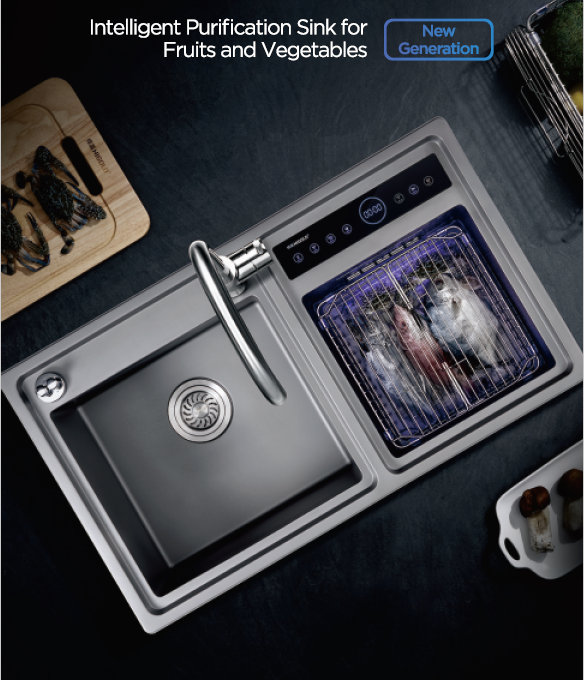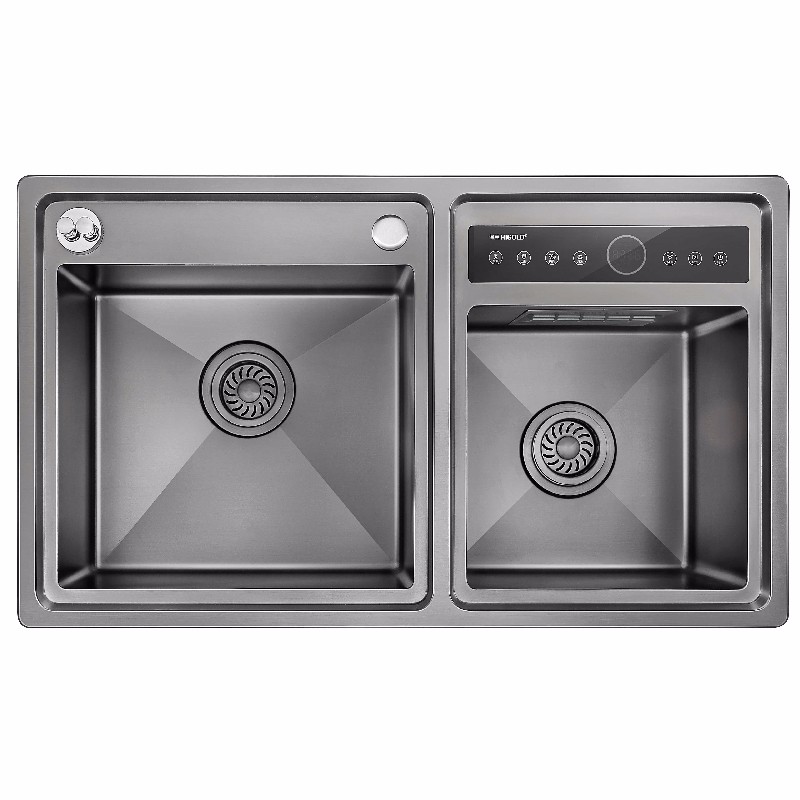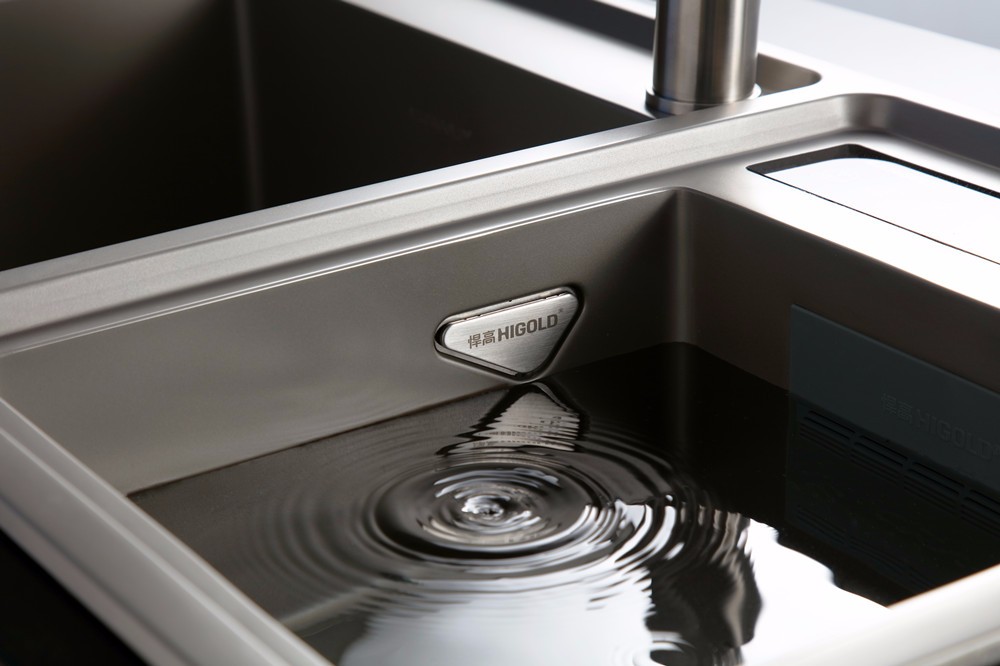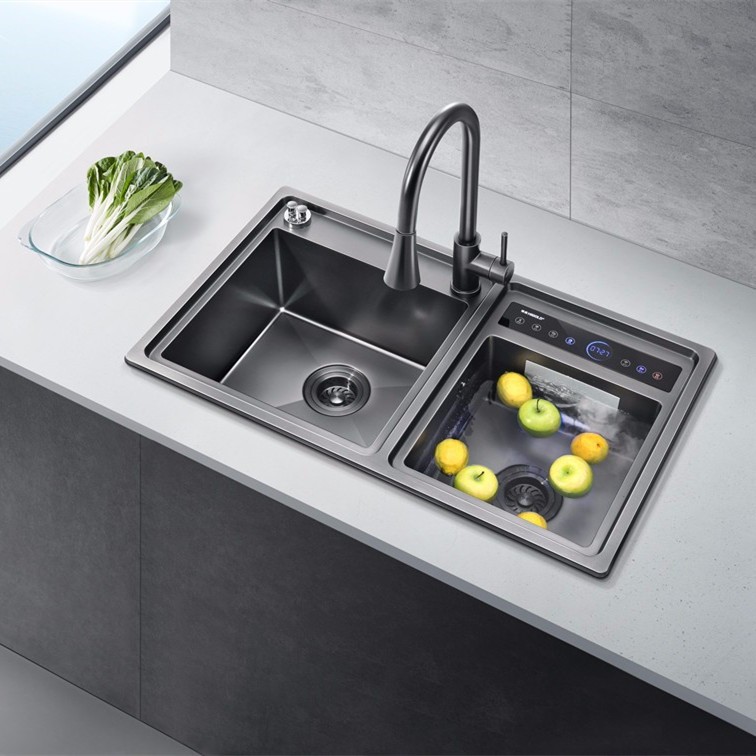In the decoration process of modern kitchens, sinks are one of the most commonly used equipment, and the design of the Kitchen double bowl sink, with its two independent slots, can meet more kitchen needs and has become a standard in many family kitchens. However, in the installation of the kitchen double bowl sink, the design of the pipe connection is also one of the important aspects of everyone's attention, among which the question of "whether two traps are needed" often causes a lot of discussion.
As an important part of the kitchen drainage system, does the trap need to be equipped with a trap for each slot? This issue is not only related to the drainage efficiency of the double bowl sink, but also involves safety issues such as the maintenance and cleaning of the water pipes and the hidden dangers of water leakage. Therefore,
In this article, we will discuss this issue in depth, analyze whether the Kitchen double bowl sink needs to be installed with two traps, and explain it in detail from the perspectives of technology, specifications, and installation.

What is a trap?
Before understanding whether it is necessary to install two traps for the Kitchen double bowl sink, we first need to understand what a trap is. A trap is a curved pipe part in the drainage system of a water pipe, usually installed between the drain outlet of a sink or wash basin and the sewer pipe. The function of the trap is to form a water seal to prevent odors and dirty air in the sewer from flowing back into the kitchen or bathroom, ensuring the freshness of the indoor air. It prevents air, odors and insects from rebounding from the sewer through the existence of a water seal, while ensuring the smooth flow of the drainage system.
According to the design requirements of the pipeline, the position of the trap in the drainage pipe is usually below the drain outlet of the sink, forming a small bend to maintain a certain water seal height. Common types of traps are P-type traps and S-type traps. P-type traps are usually installed directly below the sink, while S-type traps can be flexibly installed in places with limited kitchen space.

How to design the pipeline of a kitchen double bowl sink?
The kitchen double bowl sink can handle different kitchen cleaning tasks through two independent slots. In order to ensure smooth drainage, the kitchen double bowl sink usually drains the water from the two slots through a drainage system. However, in the design of the pipeline, whether it is necessary to equip each slot with an independent water trap is a key issue.
1. Basic requirements of the drainage system
From the perspective of the drainage system, the drainage pipe design of the sink needs to meet the national building pipe specifications and sink drainage efficiency requirements. In the normal drainage process, if the drainage pipes of the two slots are connected to the same drain pipe and a water trap is set, the water flow can pass smoothly, avoiding unnecessary design complexity. Usually, the kitchen double bowl sink drainage system uses a unified drainage pipe system, and then a water trap is sufficient to provide drainage protection for the two slots.
2. Water trap requirements for double bowl sinks
In some designs, some families or decoration companies may propose the idea of setting up a separate water trap for each slot to ensure that the drainage system of each slot can effectively prevent odor backflow. However, from the perspective of pipeline specifications, it is usually not necessary to install a separate water trap for each slot. The reasons are as follows:
● Specification requirements: According to the relevant national building and pipeline construction specifications, the drainage pipes of the double bowl sink can be drained through a unified drain pipe without having to configure a separate water trap for each slot. This is because the sink drainage system already has a common drainage path, and a trap can ensure the normal drainage and air sealing of the entire system.
● Space and efficiency issues: If a separate trap is installed for each slot, it will not only take up more space, but also increase the complexity of the installation. The excessive complexity of the pipeline system may also make it difficult to repair and clean later, increasing maintenance costs.
● Rationality of drainage pipe design: One of the design principles of drainage pipes is to simplify the system while maintaining efficient drainage. If a trap is installed in each slot, it may affect the overall drainage efficiency and even cause poor drainage.

Why does the specification explicitly prohibit the use of double traps?
According to the pipeline installation specification and architectural design standards, it is clearly stated that it is not advisable to install two independent traps for the Kitchen double bowl sink. The main reasons are as follows:
1. Prevent airflow and water seal damage
In the drainage system of the Kitchen double bowl sink, if a trap is set for each slot, when the water flows through the drainage pipe, it may cause unstable airflow and even water seal damage. This is because two independent traps may interfere with each other, affecting the water seal effect of one of the slots, causing odor backflow from the sewer and affecting the air quality of the kitchen.
2. Avoid blockage of drainage pipes
Multiple traps working in parallel may make the pipes more susceptible to blockage or water accumulation, especially when the sink is in use, food residues and grease may enter the drainage system with the water flow. If each slot is equipped with an independent trap, the risk of blockage will increase, especially when the drainage pipe design is unreasonable, which can easily lead to blockage of the pipe system and affect the normal use of the kitchen sink.
3. Improve the simplicity and drainage efficiency of the system
Using one trap instead of two can make the drainage system simpler, reduce unnecessary pipe connections and bends, and thus improve the overall drainage efficiency. An effective trap is enough to ensure smooth drainage of the double bowl sink while avoiding the complexity of the pipe system.

What is the correct design method for the kitchen double bowl sink pipe?
For the pipe design of the kitchen double bowl sink, the correct approach is:
● Use a single trap: According to the specification requirements, the kitchen double bowl sink only needs to install a trap. This design can effectively prevent sewer odor backflow and ensure the smooth drainage system of the entire sink.
● Reasonable layout of drainage pipes: Connect the drainage pipes of the two slots to the same main drain pipe, and ensure that the direction and slope of the pipes are reasonably designed to avoid water stagnation or poor drainage. This design can not only meet drainage needs, but also reduce the complexity of the pipeline system.
● Regular cleaning and maintenance: Although the single trap design can improve drainage efficiency, it is still very important to regularly clean the grease and food residues in the sink and drainage pipes. Avoid drainage problems caused by water accumulation or blockage.
Higold Group: Your Reliable Partner for Kitchen Sinks and Faucets
As a leading supplier of stainless steel kitchen sinks and faucets, Higold Group offers premium products at competitive prices. We are equipped with cutting-edge production technology, ensuring precise and durable results. Whether you're purchasing for a small project or bulk orders, we offer customized solutions and special promotions to meet your needs. Contact us for quotes and enjoy high-quality products delivered on time.


